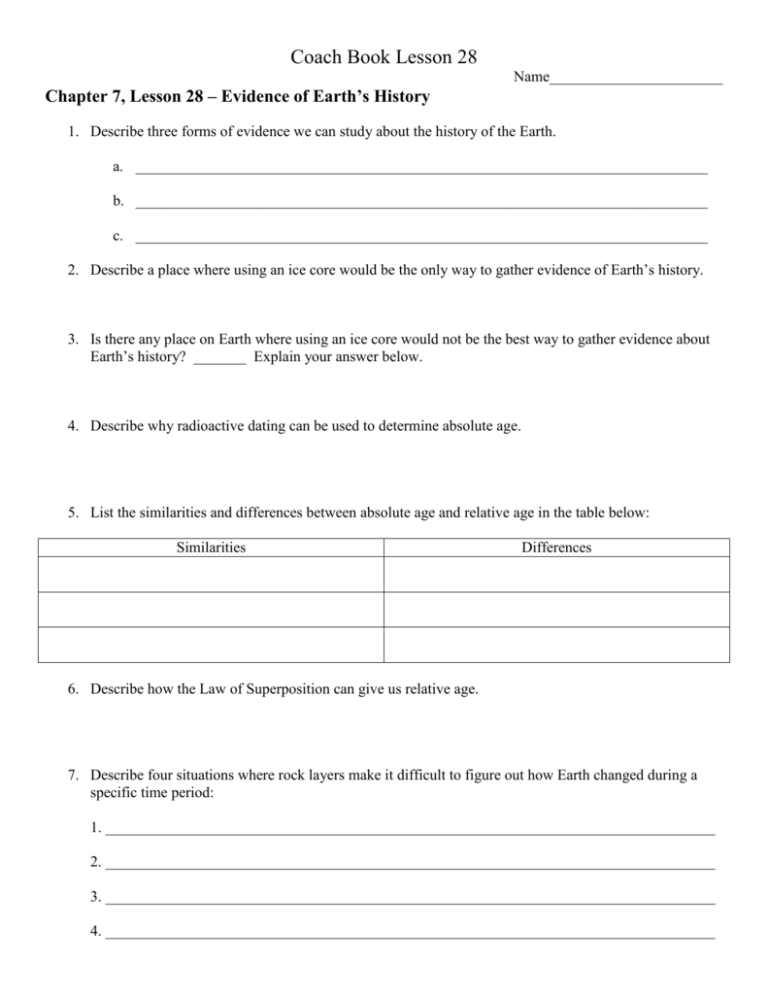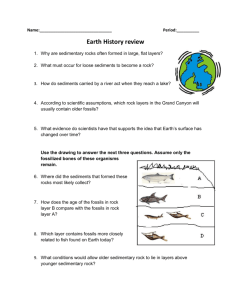Coach Book Lesson 14 & 15
advertisement

Coach Book Lesson 28 Name_______________________ Chapter 7, Lesson 28 – Evidence of Earth’s History 1. Describe three forms of evidence we can study about the history of the Earth. a. ____________________________________________________________________________ b. ____________________________________________________________________________ c. ____________________________________________________________________________ 2. Describe a place where using an ice core would be the only way to gather evidence of Earth’s history. 3. Is there any place on Earth where using an ice core would not be the best way to gather evidence about Earth’s history? _______ Explain your answer below. 4. Describe why radioactive dating can be used to determine absolute age. 5. List the similarities and differences between absolute age and relative age in the table below: Similarities Differences 6. Describe how the Law of Superposition can give us relative age. 7. Describe four situations where rock layers make it difficult to figure out how Earth changed during a specific time period: 1. _________________________________________________________________________________ 2. _________________________________________________________________________________ 3. _________________________________________________________________________________ 4. _________________________________________________________________________________ 8. How do index fossils help determine the age of rock layers? 9. What can fossils tell us about the history of Earth’s climate? Lesson Review: 1. To learn how Earth’s atmosphere has changed over time, scientists study air bubbles in which of the following? a. Ice cores b. Pollen c. Rocks containing uranium d. Fossils in sedimentary rock Follow-up question: Name two things found in the air bubbles: ______________ ______________ 2. In which situation will older rock layers lie above younger rock layers? a. b. c. d. Erosion has exposed older rocks, and new layers have been deposited. Rock layers have been overturned by folding. Sedimentary rock layers have remained undisturbed after deposition. Igneous intrusions have cut through layers of sedimentary rock. Follow-up question: What type of rock is formed by an intrusion? _______________ 3. The diagram on page 170 shows layers of sedimentary rock. Assuming that this rock formation is undisturbed, what is the relative age of layer C? a. b. c. d. It is the youngest rock layer. It is the oldest rock layer. It is older than B and younger than D. It is younger than B and older than D. Follow-up question: Describe another way to give the relative age of layer C. ______________________________________________________________ 4. Radioactive dating is used to find a. b. c. d. The locations of index fossils The identities of index fossils The absolute ages of rocks and fossils The relative ages of rocks and fossils Follow-up question: What two elements are commonly used to determine radioactive dating? _____________________ _____________________







